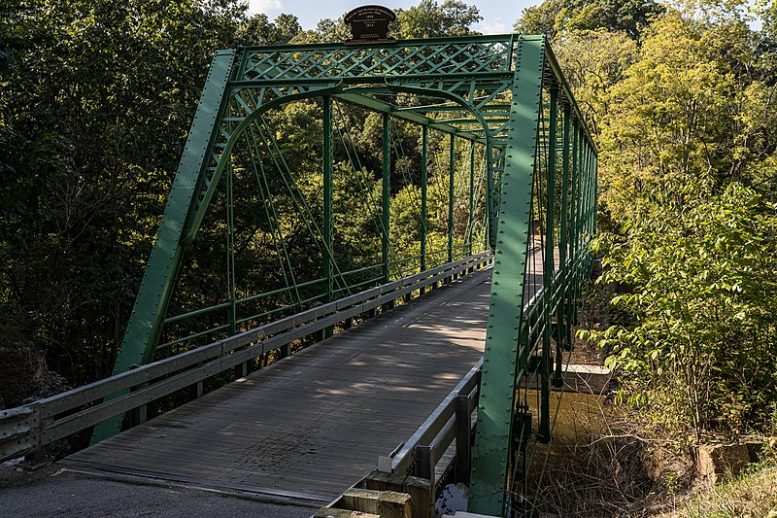Ohio Capital Journal
County engineers glad for gas tax hike, but rising material costs still a concern for some
Tim Schumm is already looking forward to spring.
County engineers like him also serve as amateur meteorologists. Forget baseball. Spring means it’s paving season, and the Henry County official knows the recent influx of gas tax revenue will help to get an extra 11 miles of road paved this spring. His office couldn’t have paid for those miles otherwise.
It might not sound like much. For Henry County, with a population shy of 30,000, Schumm called that a “pretty good workload.”
Infrastructure needs all around Ohio prompted legislators to approve a gas tax hike last year from 28 to 38.5 cents per gallon. Nearly half of the resulting revenue is divvied up by local governments — counties, municipalities and townships.
The county share is split evenly among the 88 in Ohio, regardless of population. It comes out to about $4 million in Fiscal Years 2020 and 2021, or $1.5 million in new revenue for each county per year.
A drop in the bucket in Cuyahoga and Hamilton can mean the world in Henry and Meigs.
In interviews with a number of county engineers throughout the state, officials described being grateful for this additional aid. In many counties, these funds will pay for projects that the counties would not have been able to afford.
For other engineers who have faced flat funding yet rising material costs, this increase is merely making up part of a shortfall that will continue well into the next decade.
While there is still more financial support needed to help upkeep Ohio’s roads and bridges, the engineers say this recent gas tax increase is at least a step in the right direction.
“This is a big shot in the arm,” said Dean Ringle, executive director of the County Engineers Association of Ohio.
For low-population counties with limited budgets, Ringle said it can be difficult to balance the various priorities. Put money into bridges, and the roadways deteriorate. Focus on paving, and the bridges suffer.
The gas tax went into effect last July with funds beginning to be distributed later in 2019. It’s hard to get much work done in the cold weather months, so county engineers have spent this time planning and improving their offices. Some are purchasing new vehicles, Ringle said, while another is investing in a new salt barn in preparation for winter storms.
Amy Zwick in Monroe County is among those brainstorming for the year ahead. County engineers in rural areas find creative ways to stretch limited resources to get maximum value. Zwick suggested the gas tax money could be used as a local match in securing larger federal project funds.
It has been a challenging few years in Monroe County, where severe flooding has caused significant damage and led Gov. Mike DeWine to issue a state of emergency. The mixture of structurally unsound roads, hilly terrain and heavy rains can cause roadways to “slip,” requiring an expensive and lengthy fix.
In a 2018 report, Zwick’s office identified dozens of slip repair projects throughout Monroe County, with total construction costs in the millions. The county is having a difficult time repairing the slips, though, because of the poor state of local bridges. Some bridges have restricted access because they cannot hold heavy load limits of construction equipment.
Zwick will juggle numerous priorities in 2020 and beyond: get a slate of culverts and ditches replaced to prevent future flooding issues, fix as many bridges as possible and leverage the gas tax funds as best she can.
‘It’s had a huge effect’
Scott Coleman admits that he is one of the lucky ones. In Logan County, where Coleman serves as engineer, a sales tax was enacted many years ago that generates $1 million or more per year for his office.
As a result, his county has not had as rough of a funding shortfall as in other places.
Nevertheless, he called the increase “vital” — particularly because of the rise in material prices over the years.
Engineer Cameron Keaton in Knox County, northeast of Columbus, offered a similar perspective. He noted that DeWine had originally called for an 18-cent increase to the gas tax, but the legislature settled on 10.5 cents. The transportation budget also lacks an adjustment factor for inflation, Keaton pointed out, meaning local governments’ purchasing power will decline over time while funding will remain tied to gas spending. With electric vehicle technology improving and EV sales on the rise, Keaton said it is inevitable that officials will once again have to lobby for more funding toward infrastructure needs.
Knox County has both pros and cons, Keaton said; while not susceptible to the flooding issues of other areas, its relatively large size means more responsibility for his office. There are 400 miles of county roadway to go along with 326 bridges to maintain.
The extra gas tax money will allow Knox County to provide more permanent improvements rather than “Band-Aid fixes,” Keaton added.
“It’s had a huge effect,” the engineer said of the gas tax hike. “Overall, it’s been a great thing for us to get.”
Back in Henry County, Schumm said his focus will be on maintaining the area’s roadways. The county’s bridges are in good shape and the salt supply is still high, thanks to a mild winter so far.
Now it’s just a matter of waiting for the weather to heat up, and then it’s time to get to work.





